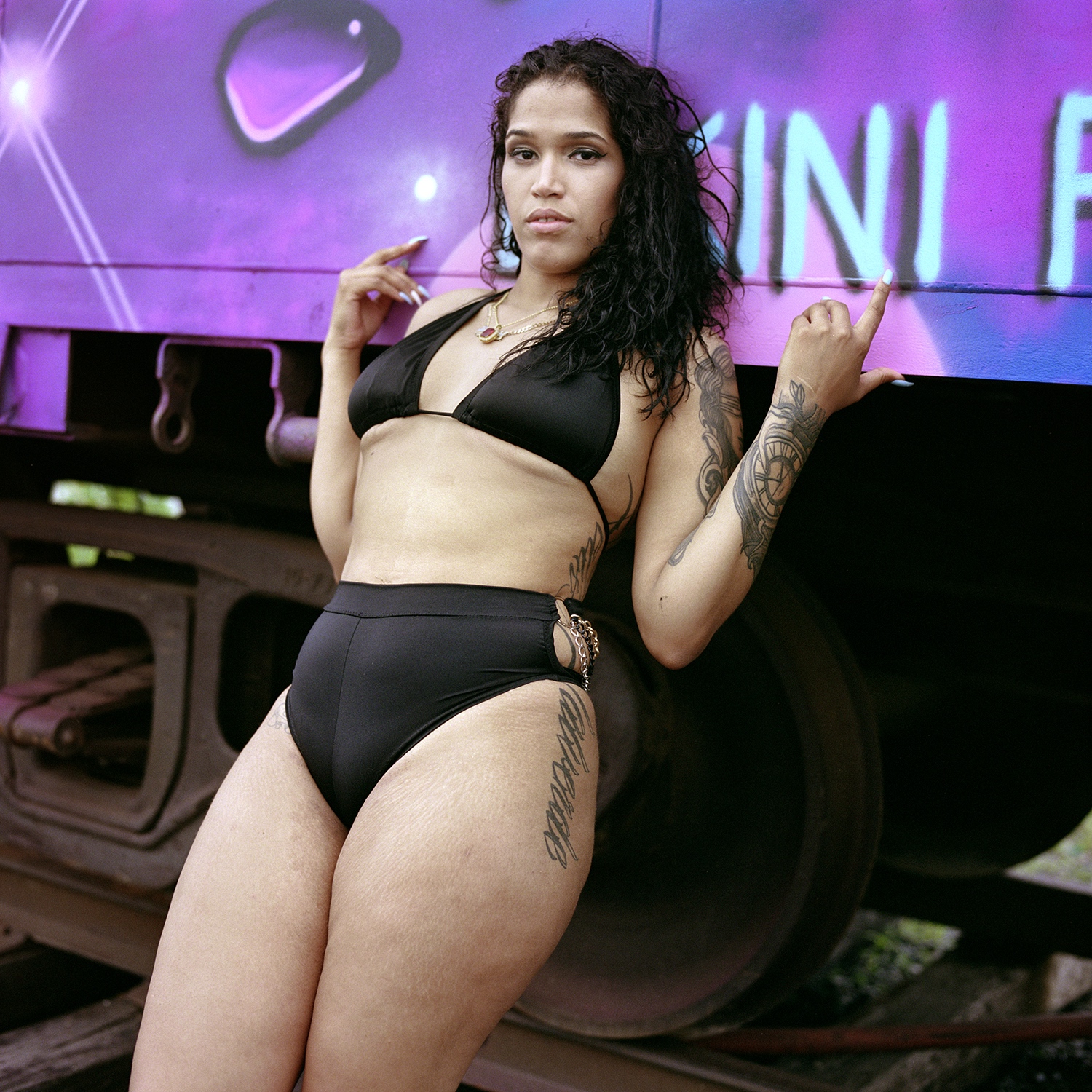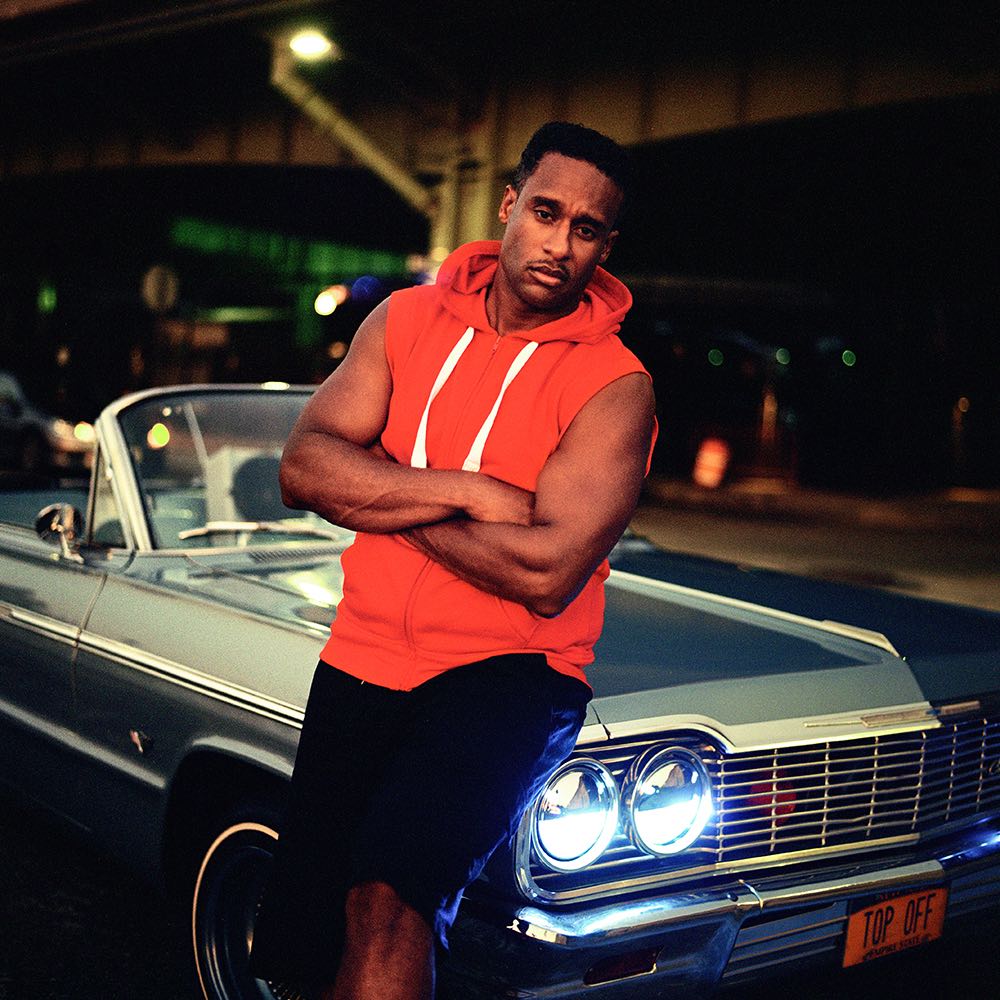Cruising the streets with New York’s lowriders
- Text by Biju Belinky
- Photography by Owen Harvey

Regardless of what the name might lead you to believe, Lowriding is not, by any means, a lowkey, discreet practice. Quite the opposite really – the men and women who parade through the streets of Los Angeles and New York pride themselves in standing out, and on the vibrant colours and paint jobs of their highly-customised cars, sometimes equipped with gravity-defying bouncing hydraulics, always with floorboards low, almost scraping the tarmac.
Lowriding, an originally Mexican-American subculture that has been around since 1940s, has had a huge, largely unnamed influence in pop culture, and has been repeatedly immortalised in a number of music videos and live performances – from Dr. Dre and Snoop Dogg’s iconic stage entrance during the Up in Smoke tour, back in the 2000s, all the way through Cypress Hill’s 60 million-view strong music video for “Lowrider.”
“I first saw lowriding when I was about 12 years old, in music videos and images of rappers such as Dr Dre, Snoop Dog, N.W.A, Notorious BIG,” writes British photographer Owen Harvey. Naturally drawn to subcultures as he got older, Owen’s interest in the customised cars, their lasting influence, and the communities surrounding them was piqued.
It was a while before the photographer finally took to the United States, determined to capture the world of the Lunatic Lowriders – a New York-based club, known for “not being timid with the switches” and cruising around Times Square. Unsure of what to expect, but armed with a camera, the Londoner headed on his first, three-month long trip to Manhattan.

“I think the first night going lowriding was the one that really stood out to me,” he tells me. “I’d been shooting Jazz musicians during the day in The Bronx and was becoming sceptical if the lowriding project would go ahead, as I hadn’t had a response from anyone in a little while.”
“I was about to jump on the subway to head back down to Manhattan, when I got a call from Willy, one of the members of the Lunatic Lowriders Club, who is now a good friend, asking me to meet them. I was waiting for them for half an hour or so and then around 12 cars pulled up, I jumped in and we went cruising around the whole of Manhattan until 3AM or so. Straight away, they were very welcoming and I knew it was going to be an amazing first 3 months working on the project. I felt a bit like I’d stepped straight in to a film, the whole night was very surreal.”
That was the beginning of his Ground Clearance series, shot over the course of four trips to America throughout 2016 and 2017. During that time, Owen became entirely immersed in the subculture, going to events, meet-ups and learning all he could about the scene, that embodied both a passion for DIY and a strong sense of community, cultural identity and pride.
“All of the guys in the clubs came into lowriding in different ways,” Owen tells me. “Some had joined because they’d seen other clubs in the streets and decided there and then they needed their own lowrider. For others, it was about expressing their Mexican American culture and for some, it was their initial interest in music and iconic music imagery during their youth that had sparked the interest.”
He continues: “I think lowriding brings a huge amount into the lives of those involved in the scene. The excitement of cruising on three wheels or bouncing up and down on the hydraulics to the rap music of your youth. The buzz you get from seeing others on the street react all the hard work you’ve put into your car. It’s the brotherhood and community aspect.”
See more of Owen’s work on his website.
Enjoyed this article? Like Huck on Facebook or follow us on Twitter.
Latest on Huck

Clubbing is good for your health, according to neuroscientists
We Become One — A new documentary explores the positive effects that dance music and shared musical experiences can have on the human brain.
Written by: Zahra Onsori

In England’s rural north, skateboarding is femme
Zine scene — A new project from visual artist Juliet Klottrup, ‘Skate Like a Lass’, spotlights the FLINTA+ collectives who are redefining what it means to be a skater.
Written by: Zahra Onsori

Donald Trump says that “everything is computer” – does he have a point?
Huck’s March dispatch — As AI creeps increasingly into our daily lives and our attention spans are lost to social media content, newsletter columnist Emma Garland unpicks the US President’s eyebrow-raising turn of phrase at a White House car show.
Written by: Emma Garland

How the ’70s radicalised the landscape of photography
The ’70s Lens — Half a century ago, visionary photographers including Nan Goldin, Joel Meyerowitz and Larry Sultan pushed the envelope of what was possible in image-making, blurring the boundaries between high and low art. A new exhibition revisits the era.
Written by: Miss Rosen

The inner-city riding club serving Newcastle’s youth
Stepney Western — Harry Lawson’s new experimental documentary sets up a Western film in the English North East, by focusing on a stables that also functions as a charity for disadvantaged young people.
Written by: Isaac Muk

The British intimacy of ‘the afters’
Not Going Home — In 1998, photographer Mischa Haller travelled to nightclubs just as their doors were shutting and dancers streamed out onto the streets, capturing the country’s partying youth in the early morning haze.
Written by: Ella Glossop








